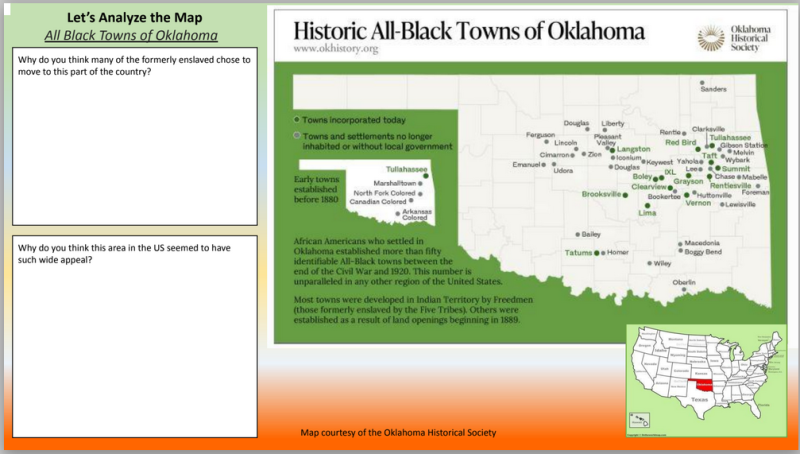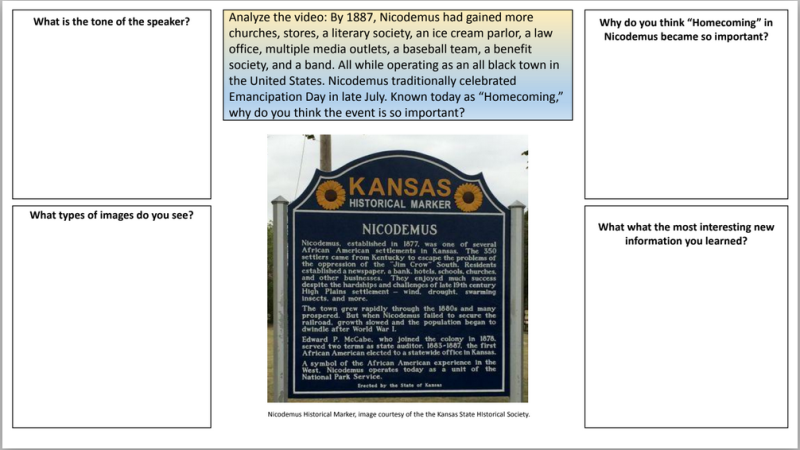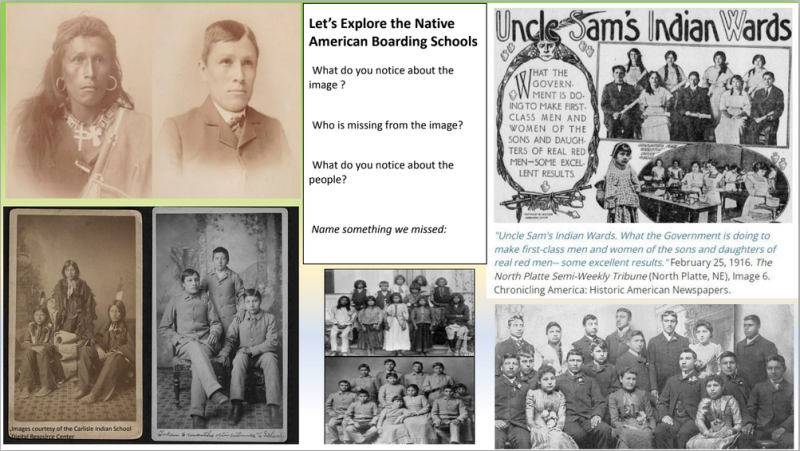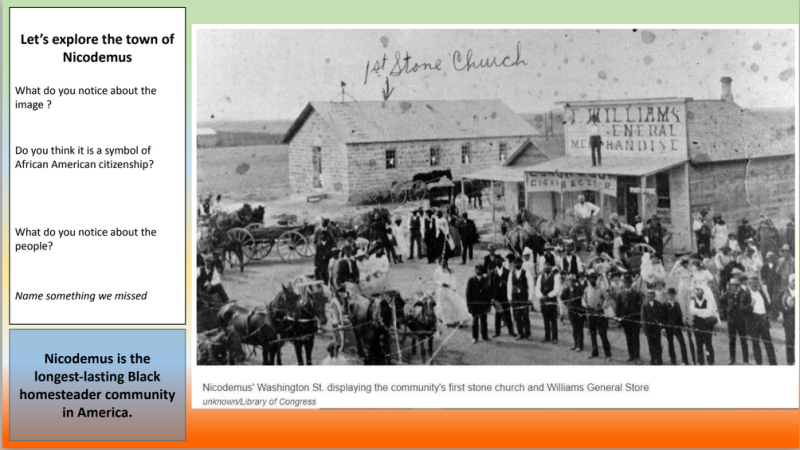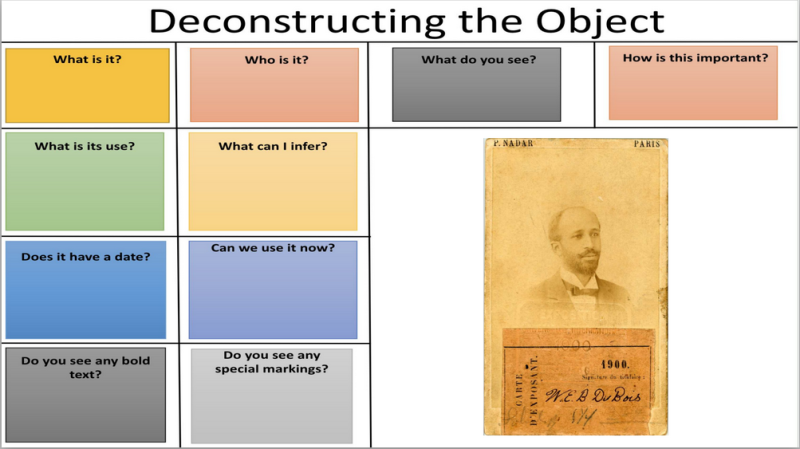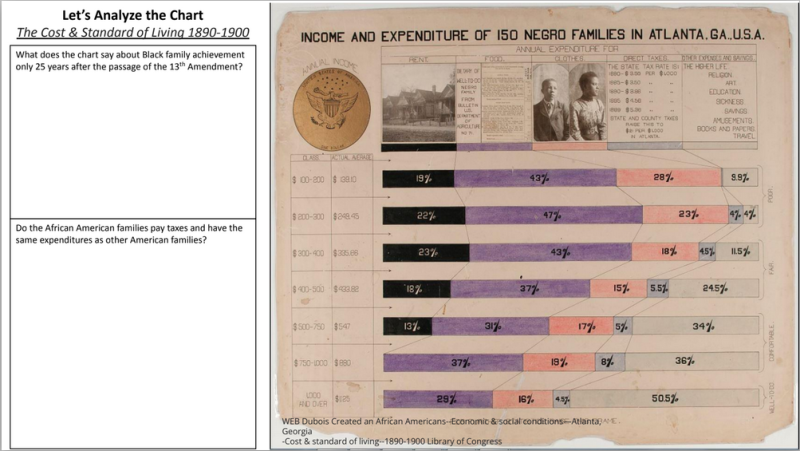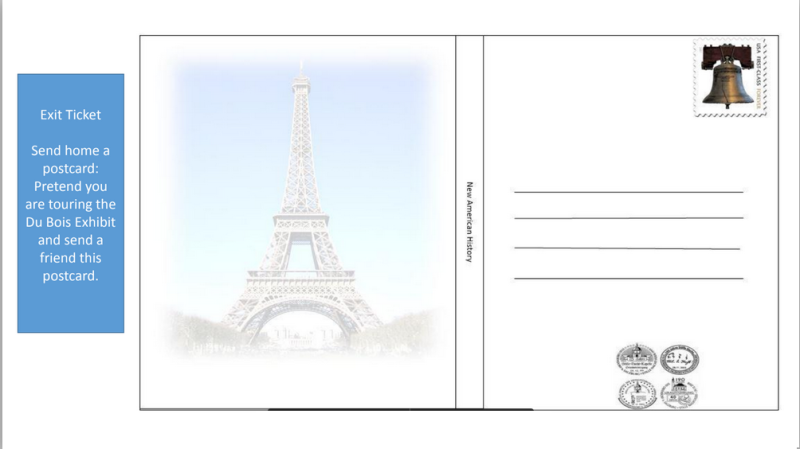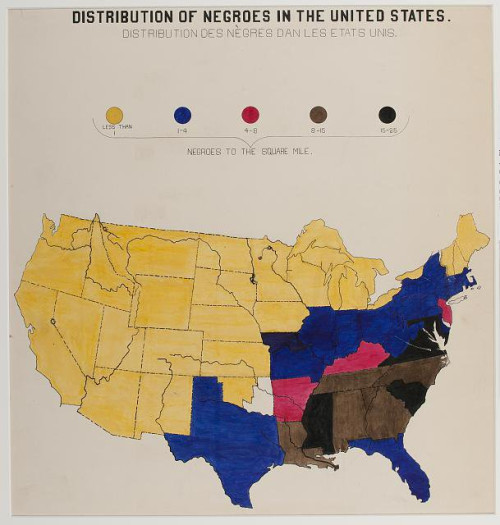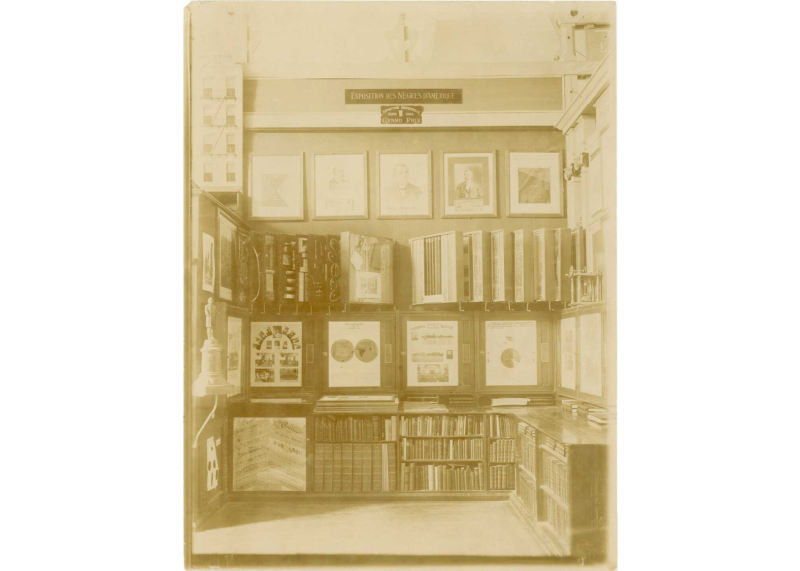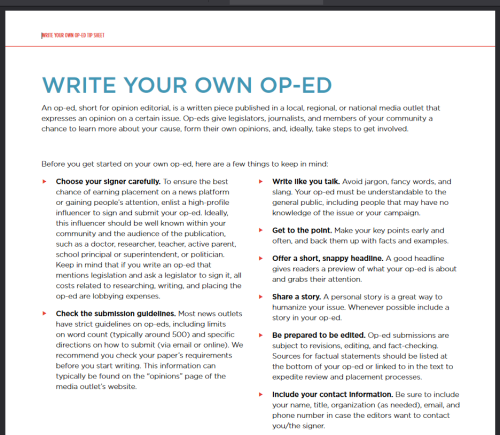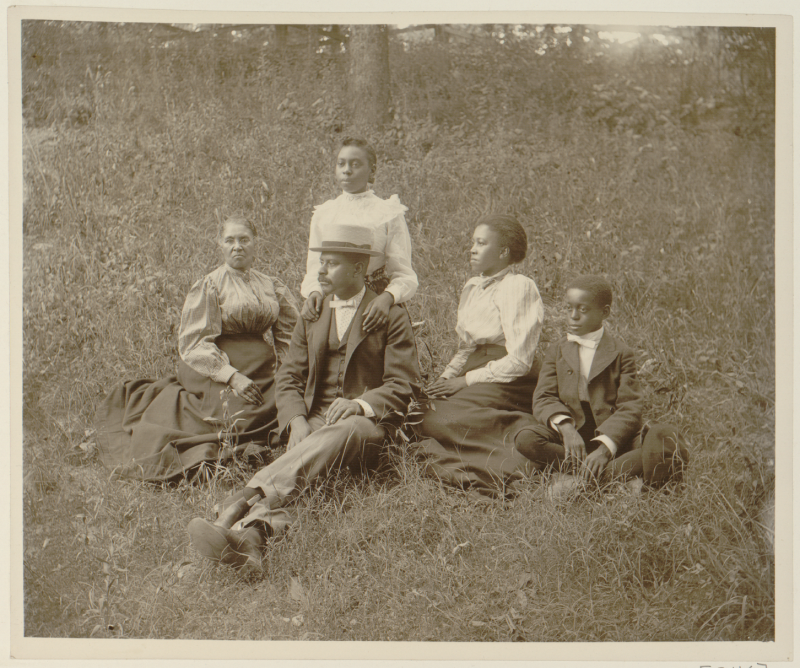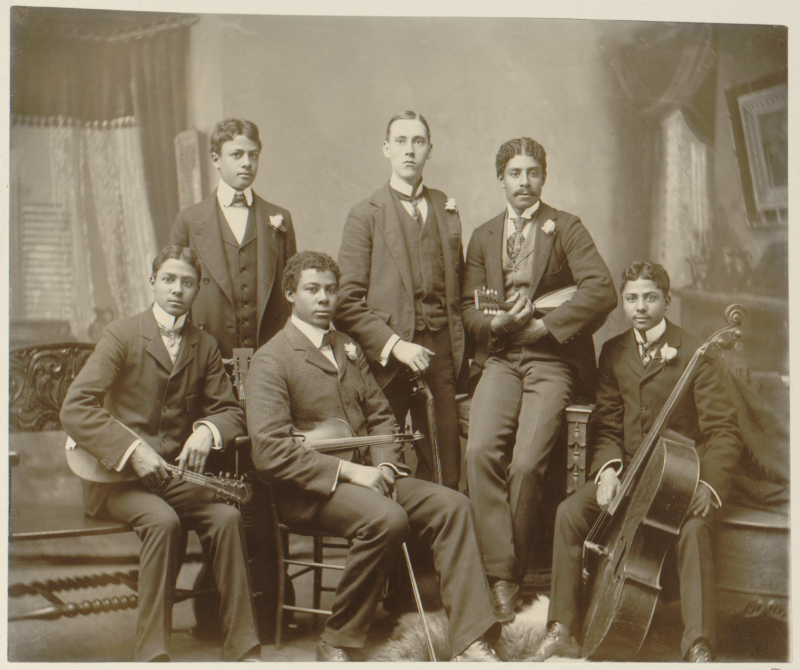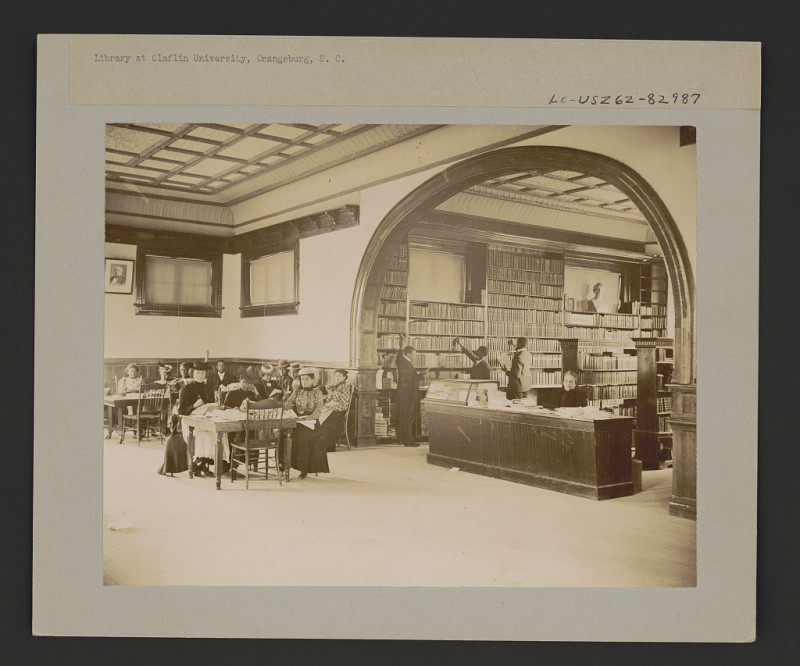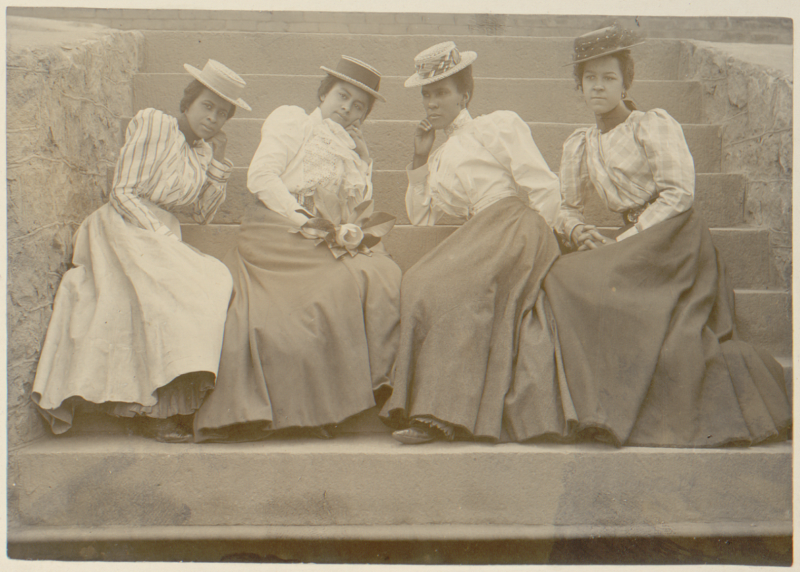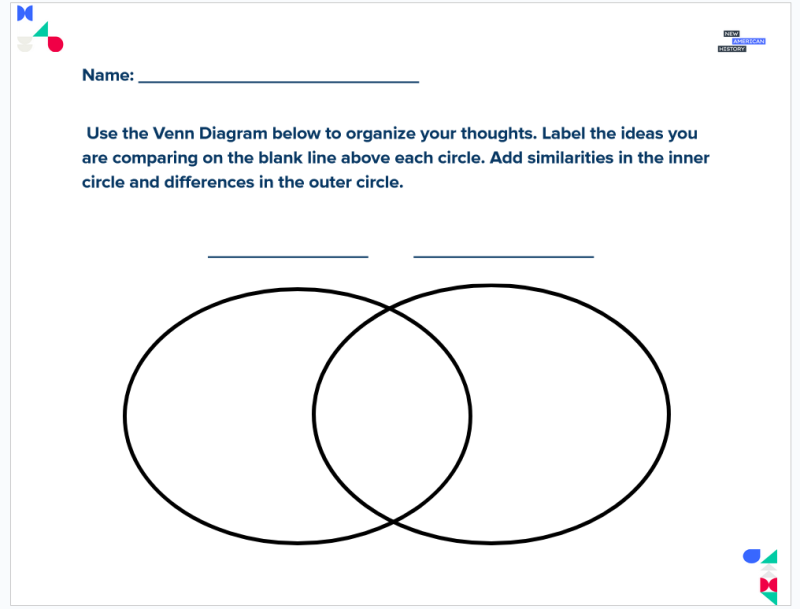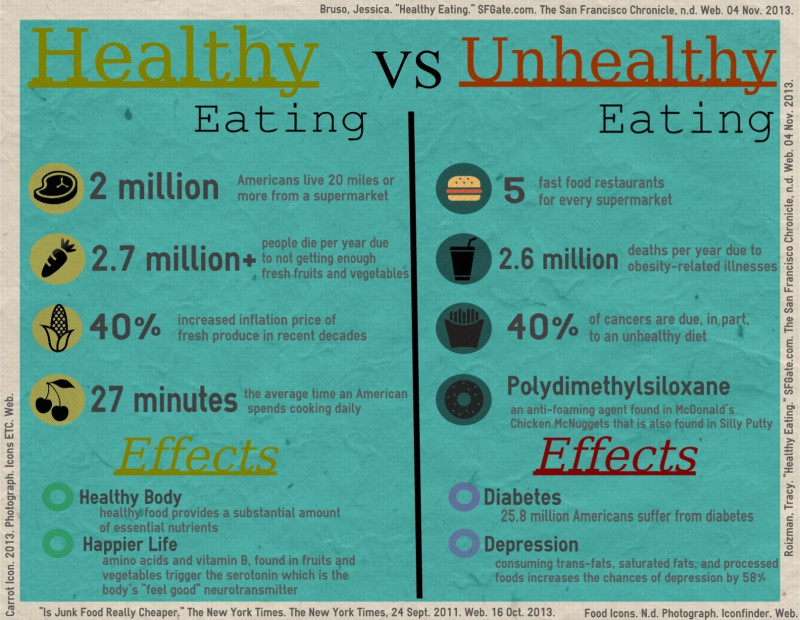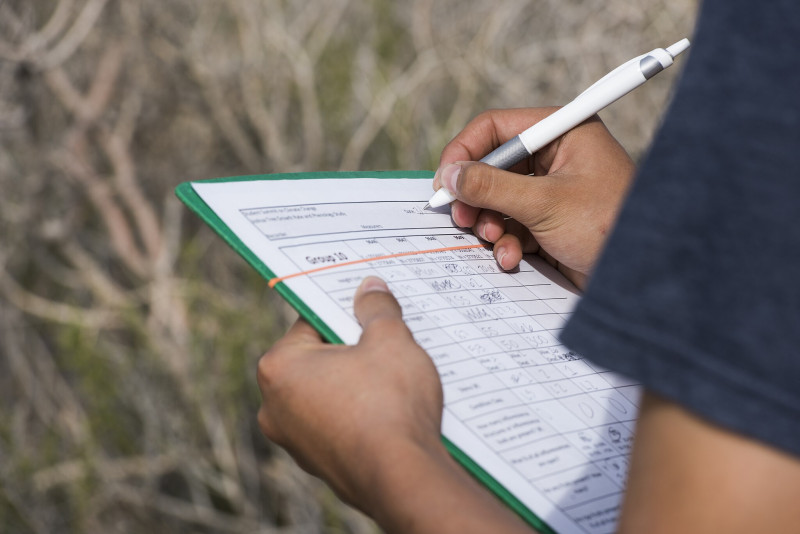This work by New American History is licensed under a Attribution-NonCommercial-ShareAlike 4.0 (CC BY-NC-SA 4.0) International License. Permissions beyond the scope of this license may be available at newamericanhistory.org.
W.E.B. Du Bois: The 1900 Paris Exposition and the Case For Negro Citizenship
View Student Version
Standards
C3 Framework:D2.Civ5.9-12. Evaluate citizens’ and institutions’ effectiveness in addressing social and political problems at the local, state, tribal, national, and/or international level.D2.Civ.12.9-12. Analyze how people use and challenge local, state, national, and international laws to address a variety of public issues. D2.Civ.13.9-12. Evaluate public policies in terms of intended and unintended outcomes and related consequences.
National Council for Social Studies:Theme: Power, Authority, and GovernanceTheme: Civic Ideals and Practice
EAD RoadmapHDQ1.4B How have changes in the media affected American civic experience?Analyze the past and present role of the media in shaping civic participation, including the importance of using credible sources
Teacher Tip: Think about what students should be able to KNOW, UNDERSTAND and DO at the conclusion of this learning experience. A brief exit pass or other formative assessment may be used to assess student understandings. Setting specific learning targets for the appropriate grade level and content area will increase student success.
Suggested Grade Levels: Middle School 6-8 / High School 9-12
Suggested Time frame: Two 90-minute classes or four 45-minute classes
Suggested Materials: Internet access via laptop, tablet, or mobile device
Key Vocabulary
14th Amendment - Added to the United States Constitution after the American Civil War, granting citizenship rights to all persons born in the United States.
Assimilate - The US government and religious organizations' efforts to convert Native Americans into mainstream European descent Americans
Data visualization - the representation of information in the form of a chart, diagram, map, picture, or other format
Discrimination - The unfair treatment of people based on their race, gender, age, etc.
Infographic - a visual image such as a chart or diagram used to represent information or data
Jim Crow laws - State and local laws that enforced segregation between races
Ku Klux Klan (KKK) - A white supremacist group founded in 1865 to intimidate African Americans and other minority groups from asserting themselves in any way, including politically
Reservations - Land under the control and governed by the Native American Tribal Nation
Segregation - The practice of race-based separation in public spces including schools, public transportation, restroom facilities, and neighborhoods; many communities in the United States were segregated for centuries, and while the Civil Rights Movement of the 1960s removed many legal barriers, some are still socially segregated.
Sharecropping - A farming system where poor white and black families rent plots of land in exchange for working the fields and a portion of the crops harvested.
Sociological perspectives - The three main theories used to explain how society influences people, and vice versa. (theoretical perspectives: the functionalist perspective, the conflict perspective, and the symbolic interactionist perspective)
Sundown towns - (Also known as sunset towns, gray towns, or sundowner towns) were all-white communities that restricted minorities as residents (unless living while working in service to a white family) after the sun went down, or as residents. A form of racial segregation by excluding non-whites through intimidation or violence.
Plessy v. Ferguson - A landmark Supreme Court case ruling that upheld the legal separation of facilities for different races, establishing the “separate but equal” policy for many years
Racial terror - the threat or act of violence based on race used to intimidate and cause fear in its victims
Read for Understanding
Teacher Tip:
New American History Learning Resources may be adapted to a variety of educational settings, including remote learning environments, face-to-face instruction, and blended learning.
If you are teaching remotely, consider using videoconferencing to provide opportunities for students to work in partners or small groups. Digital tools such as Google Docs or Slides may also be used for collaboration. Rewordify and Wordtune Read help make a complex text more accessible for those reading at a lower Lexile level while still providing a greater depth of knowledge. Specifically for this lesson, you will use various digital tools including this Google Slides deck, graphic organizers including a Venn diagram and a short OpEd piece, and their own data visualizations. Students will need to make a copy of the slides, graphic organizers, and templates to complete each learning experience. This blog post may help prepare students for success. Additional information on the Du Bois Exhibit may be found using Bunk.
This learning resource is a collaboration between New American History, American Inequality, and the Seizing Freedom podcast. It contains sensitive historical facts, some students may be triggered emotionally by the content; when available follow your district’s Social Emotional Learning (SEL) guidelines. Also, be aware of a student’s ability to process the information independently. This link from SAVVAS offers ideas for providing SEL support ideas and examples to assist with instruction. Throughout the lesson, teach with resilience, incorporate self-awareness, connect relationships to today, and consider accountability.
Students may access the Du Bois colored infographics and photographs from the Library of Congress. Additional images are here for download to use in class.
These Learning Resources follow a variation of the 5Es instructional model, and each section may be taught as a separate learning experience, or as part of a sequence of learning experiences. We provide each of our Learning Resources in multiple formats, including web-based and as an editable Google Doc for educators to teach and adapt selected learning experiences as they best suit the needs of your students and local curriculum. You may also wish to embed or remix them into a playlist for students working remotely or independently.
For Students:
An early leader in civil rights, W.E.B. Du Bois - a scholar, public intellectual, author, and orator - was the first Black person to earn a PhD from Harvard. Du Bois used his talent and intellect to pave a path toward racial uplift. In 1900, Du Bois was the primary organizer of The Exhibit of American Negroes at the Exposition Universelle held in Paris. He put together a series of 363 photographs, as well as statistical charts, graphs, and maps, aiming to commemorate the lives of African Americans at the turn of the century and challenge the racist stereotypes of the day. Du Bois was awarded a gold medal for his role as compiler of the materials, which are now housed at the Library of Congress.
Engage:
Why was it hard for 20th-century American society to move past slavery?
Although the Civil War ended in defeat for the South, the anger and feelings of white superiority over the enslaved did not end with the fighting. Some people still believed that minorities did not deserve to enjoy the same rights as white citizens born in the United States. The Thirteenth Amendment adopted on December 18, 1865, ended enslavement. On June 8, 1866, the Fourteenth Amendment was ratified by the US Senate, yet it took two more years for final states ratification. However, the last slave-holding area in Galveston Bay, Texas was not notified until two years after Lincoln’s Emancipation Proclamation was signed on January 1, 1863. Throughout the Civil War, Texas slavery remained virtually unchanged until 2,000 federal troops took control of the state and released 250,000 enslaved people by executive order as outlined in General Order No. 3 in 1865. That moment has been commemorated as a holiday originally called Emancipation Day, or more recently “Juneteenth”. The spirit of the day honors the end of slavery in the United States. It is considered the longest-running African American holiday. On June 17, 2021, the United States government officially began recognizing the holiday nationally.
Make a copy of this Google Slide Deck to record your responses to the questions and activities in this learning resource, or use paper copies provided by your teacher as directed.
Analyze the image on slide number two. After you examine these images, turn and talk to a partner, or virtually exchange messages using the comments feature to compare your thoughts.
- How are the people dressed?
- Why do you think this day was important to them?
- Should more people observe this holiday?
When the 13th Amendment was passed, not all persons were free. An important question to consider post-emancipation was the status of the enslaved living in Indian territory. The United States did not have jurisdiction over those areas. The 1866 Treaty with the Cherokee Nation freed those enslaved in its territory. The Native Americans voluntarily agreed to abolish slavery. African Americans immediately began forming all-black towns in this area.
Analyze the map on slide three of the historic first all-black towns in Oklahoma, formerly in Native American inhabited territory. Record your answers in the space provided.
- Why do you think they chose this area?
- Does the number of towns surprise you?
- After reviewing this map, how would you describe the formerly enslaved people?
Nicodemus, Kansas is the oldest and only functioning African American town west of the Mississippi River. View this video from the National Park Service, a poet’s interpretation of Nicodemus, then answer the questions on slide number four in the space provided. If working in pairs or groups, compare your answers with an elbow buddy. Did they notice something interesting you may have missed? If working virtually, use the comments feature to exchange ideas.
- Why do you think Nicodemus was so important to the formerly enslaved settlers?
- What is the tone of the speaker?
- What did you think of the images they used in the video?
Your teacher may ask you to answer on an exit ticket
Explore:
What was the historical context around the time W.E.B. Du Bois was developing his ideas about bringing attention to the need for minorities to be accepted as equals?
Years before Black scholar W.E.B. Du Bois was born, the Indian Civilization Act of 1819 was enacted. Much like the way Black people were not treated as equals, Indigenous Peoples at that time were also considered people of color. As a result, residential Indian boarding schools were established throughout the United States government. Despite the stated intent of the Act - which was supposed to help preserve Native American language and culture - between the 19th and 20th centuries, the United States government began forcibly removing young Native American children from their homes and families. Children were sent to government or church-run boarding schools, forcing them to assimilate into mainstream culture. The children were stripped of their traditional clothing, their hair was cut short, and their education consisted of being taught English and lessons designed around Christianity while being taken far away from their families and communities.
Study slide number five with images from these United States or church-led Native American Boarding Schools, and answer the questions using the space provided.
- Do you think this helped Native American people become better citizens?
- Do you see the principles of American democracy in their actions?
- What do you think the legacy of this practice did to the Native American culture?
Although the formerly enslaved began creating their own communities and hubs, conditions similar to those endured during slavery and bondage began to re-emerge in America. Racial tyranny led to violence and sometimes death for those former slaves and free men. The enactment of Jim Crow policies quickly diminished their new rights and freedoms. Jim Crow laws embodied the spirit of racial superiority, as local ordinances and state laws made “separate but equal” an integral part of everyday life. Minority American citizens faced discrimination, racial terror, and white mob violence from group terrorist groups including the Klu Klux Klan. They found themselves forcibly removed from communities known as sundown towns, lured into sharecropping contracts, or living in fear of white retribution. The formerly enslaved came from as far as Kentucky to obtain the American dream. African Americans fled the prejudice of the South to reinvent themselves in what they hoped to find in the “Promised Land” of the Great Plains. One of the most memorable structures in the town of Nicodemus was the stone church. Analyze this image of the Nicodemus Stone Church and General Store from slide six, and record your answers in the space provided.
- Does the image on slide six show the pride and resilience of the people who settled in the town?
- How are they dressed?
- Does it look like any town in the United States during that era?
- And why do you think they took this photograph?
Your teacher may ask you to record your answers on an exit ticket.
Explain:
Could visual sources collected and created by Du Bois be used to illustrate African American culture to the world?
Although the 14th Amendment made the formerly enslaved United States citizens, free people and other minorities were protected by the Civil Rights Act of 1866. It was necessary to aid in giving them equal protection under the law. The idea of “Separate but Equal” existed by law in every aspect of their lives, meals, water, all levels of education, communities, medical facilities, and government buildings. The popularity of segregation across the country was used to erode the new freedoms gained by the 14th Amendment. With the 1896 Plessy V Ferguson Supreme Court ruling, once again minorities quickly became second-class members of American society federally. Renowned sociologist Dr. W.E.B. Du Bois, the first African American to receive a Ph.D. from Harvard University, created a World’s Fair exhibition to illustrate why Negros should be given full citizenship rights. Du Bois created a series of colored charts and graphics, now called infographics, based on the social and economic impact factors of the citizens living within a country that drives prosperity. On slide seven, deconstruct the badge worn by Dr. Du Bois at the 1900 Paris World’s Fair Exposition. Use the space provided to type or write your answers.
- What surprised you about his badge?
- Do you think he knew the impact of his venture in Paris?
- What was missed?
Considered to be one of the most influential African Americans of this time period, Du Bois took those images, charts and graphs to the 1900 World Exposition in Paris, France. Listen to this segment from season two of the Seizing Freedom podcast, “On the World Stage” to hear his purpose and the description of the atmosphere in Paris. Du Bois used facts to refute the ideas of racism, his goal to prove to the world how African Americans have improved their social standings as former slaves and positively contributed to American society.
Review slide number eight, studying the chart and answering the questions using the space provided. (For a closer look, use this link to the image as shared in the slide presenter notes).
- Why do you think Du Bois created these colored charts and graphs?
- What does this chart show the public about African American financial growth since the 13th Amendment was passed?
- What is missing from the chart that you think is important?
- Review the Du Bois charts collections from the Library of Congress. Which infographic is your favorite, and why? (Additional images from the exhibit may be accessed here.)
Your teacher may ask you to record your answers on an exit ticket.
Elaborate:
Can a public exhibit change people’s perceptions about history or society?
The Paris Exposition exhibit displayed over 60 data infographic charts, 200 books authored by African Americans, and 363 albums of positive images of African American culture. Unveiled at the Palace of Social Economy and Congress Dr. Du Bois used researched topics to exemplify “the history of the American Negro,” “his present condition,” “his education” and “his literature.” Du Bois’ sociological focus used statistical data and facts to refute the white narrative that African Americans and other minority communities are inherently inferior.
The exhibit opened in Paris at a time when the effects and ills of slavery remained imprinted in the minds of many around the world. The infographics illustrate the accomplishments and gains made despite slavery and other barriers created by white society. Du Bois made his point by using factors that can impact the economy of a country. He set out to prove with empirical facts why racism and disparaging comments about African Americans are untrue and unfounded.
Using the Exposition infographics and charts, you will write a short Op-Ed piece for a local newspaper, sharing your impressions of viewing the exhibit, and key ideas you learned about Du Bois’ case for equal citizenship for the formerly enslaved and other minorities living in the United States. You may find additional information or ideas for your Op-Ed using Bunk. This template may help you publish your Op-Ed piece.
Images from Du Bois’ 1900 Paris Exposition Exhibit:
Jeremy Ney is a data scientist who publishes maps, infographics, and other data visualizations on American Inequality. Each topic includes a path forward where Ney and his colleagues share possible solutions to help solve some of the inequalities explored on their site.
Scroll through the website and select one of Ney’s data visualizations. Explore the topic as visualized on the site, including the associated suggestions for a path forward.
Compare and contrast it with one from the Du Bois Paris Exposition exhibit. Use the Venn diagram provided to share your reflections. If time permits, your teacher may allow you to compare your answers with a partner or in a small group.
Your teacher may ask you to record your answers on an exit ticket.
Extend:
What topics or concerns in your community are you most interested in exploring and finding a path forward?
Use the Du Bois exhibit and examples from American Inequality to identify a topic you are most interested in exploring. It could be a school-based concern or a larger issue in your community.
Gather information to increase your own background knowledge about the topic. Look for public data on local schools or government websites. Your school library/media specialist is a TERRIFIC resource for finding information.
Create your own data visualization or infographic and share it with your class, school, and community leaders. You may hand draw them as the students who worked with Du Bois did in preparing for the Paris Exposition, or use simple drawing tools in a Google Doc or Google Slides.
We would love to see what you create! Share with us via email: editor@newamericanhistory.org.
Your teacher may ask you to record your answers on an exit ticket.
Citations:
Black Past. “1866 U.S. Treaty with the Cherokee Nation” Accessed August 10, 2022.https://www.blackpast.org/african-american-history/u-s-treaty-cherokee-nation-1866/Bridgers, Jeff. “Du Bois’s American Negro Exhibit for the 1900 Paris Exposition.” Library of Congress Blogs: Picture This, 28 February 2014. https://blogs.loc.gov/picturethis/2014/02/du-boiss-american-negro-exhibit-for-the-1900-paris-exposition/
Du Bois, W.E.B., et al (2018). W. E. B. Du Bois’s Data Portraits: Visualizing Black America. New York: Princeton Architectural Press.
Library of Congress. “African American Photographs Assembled for 1900 Paris Exposition”Accessed August 22, 2022. https://www.loc.gov/pictures/collection/anedub/background.html?loclr=blogpic
National Park Service Nicodemus National Historic Site Kansas. “Go Kansas” Accessed Aug 10, 2022. https://www.nps.gov/nico/index.htm
Ney, Jeremy. “Amerian Inequality- Maps.” American Inequality. Accessed May 1, 2024. https://www.americaninequality.io/maps.
PBS the African Americans Many rivers to cross with Henry Louis Gates. “100 Amazing Facts About the Negro” Accessed Aug 15, 2022. https://www.pbs.org/wnet/african-americans-many-rivers-to-cross/history/what-is-juneteenth/
Smithsonian Magazine. “W.E.B. Du Bois Visionary Infographic Come Together for the First Time in Full Color” Accessed August 9, 2022. https://www.smithsonianmag.com/history/first-time-together-and-color-book-displays-web-du-bois-visionary-infographics-180970826/
The Legends of America, Traveling through American History, destinations and legends since 2003 “Nicodemus-A Black Pioneer Town.” Accessed August 20, 2022. https://www.legendsofamerica.com/ks-nicodemus/
Thompson, Clive. “The Surprising History of the Infographic.” Smithsonian Magazine, July 2016. Accessed August 9, 2022. https://www.smithsonianmag.com/history/surprising-history-infographic-180959563/
Tucker, Catlin. “Student Designed Infographics: Process & Products.” Dr. Catlin Tucker, April 22, 2022. https://catlintucker.com/2013/11/student-designed-infographics-process-products.
USA Facts. “W.E.B. Du Bois' hand-drawn charts from 1900 show the story of Black Americans through data.” March 3, 2021. https://usafacts.org/articles/web-du-bois-hand-drawn-data-visualizations-black-americans/
Zucker, Adam. “W.E.B. Du Bois’ Visual Lessons About the Black Experience in Academic, Professional and Everyday Life” Artfully Learning (2017). Accessed August 20, 2022. https://theartsandeducation.wordpress.com/2020/06/17/artful-qualitative-and-quantitative-learning-via-w-e-b-du-bois-infographics-of-black-life-in-the-u-s-a/
View this Learning Resource as a Google Doc




